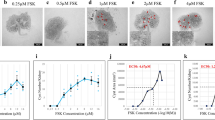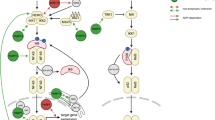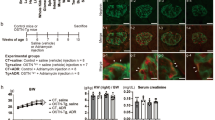Abstract
ADP-ribosyl cyclase (ADPR-cyclase) produces a Ca2+-mobilizing second messenger, cyclic ADP- ribose (cADPR), from β-NAD+. A prototype of mammalian ADPR-cyclases is a lymphocyte antigen CD38. Accumulating evidence indicates that ADPR-cyclases other than CD38 are expressed in various cells and organs. In this study, we discovered a small molecule inhibitor of kidney ADPR-cyclase. This compound inhibited kidney ADPR-cyclase activity but not CD38, spleen, heart or brain ADPR-cyclase activity in vitro. Characterization of the compound in a cell-based system revealed that an extracellular calcium-sensing receptor (CaSR)- mediated cADPR production and a later long-lasting increase in intracellular Ca2+ concentration ([Ca2+]i) in mouse mesangial cells were inhibited by the pre-treatment with this compound. In contrast, the compound did not block CD3/TCR-induced cADPR production and the increase of [Ca2+]i in Jurkat T cells, which express CD38 exclusively. The long-lasting Ca2+ signal generated by both receptors was inhibited by pre-treatment with an antagonistic cADPR derivative, 8-Br-cADPR, indicating that the Ca2+ signal is mediated by the ADPR-cyclse metabolite, cADPR. Moreover, among structurally similar compounds tested, the compound inhibited most potently the cADPR production and Ca2+ signal induced by CaSR. These findings provide evidence for existence of a distinct ADPR-cyclase in the kidney and basis for the development of tissue specific inhibitors.
Similar content being viewed by others

Article PDF
Author information
Authors and Affiliations
Rights and permissions
This is an Open Access article distributed under the terms of the Creative Commons Attribution Non-Commercial License (http://creativecommons.org/licenses/by-nc/3.0/) which permits unrestricted non-commercial use, distribution, and reproduction in any medium, provided the original work is properly cited.
About this article
Cite this article
Nam, TS., Choi, S., Rah, SY. et al. Discovery of a small-molecule inhibitor for kidney ADP-ribosyl cyclase: Implication for intracellular calcium signal mediated by cyclic ADP-ribose. Exp Mol Med 38, 718–726 (2006). https://doi.org/10.1038/emm.2006.84
Published:
Issue date:
DOI: https://doi.org/10.1038/emm.2006.84
Keywords
This article is cited by
-
Selective inhibitors of cardiac ADPR cyclase as novel anti-arrhythmic compounds
Naunyn-Schmiedeberg's Archives of Pharmacology (2012)


